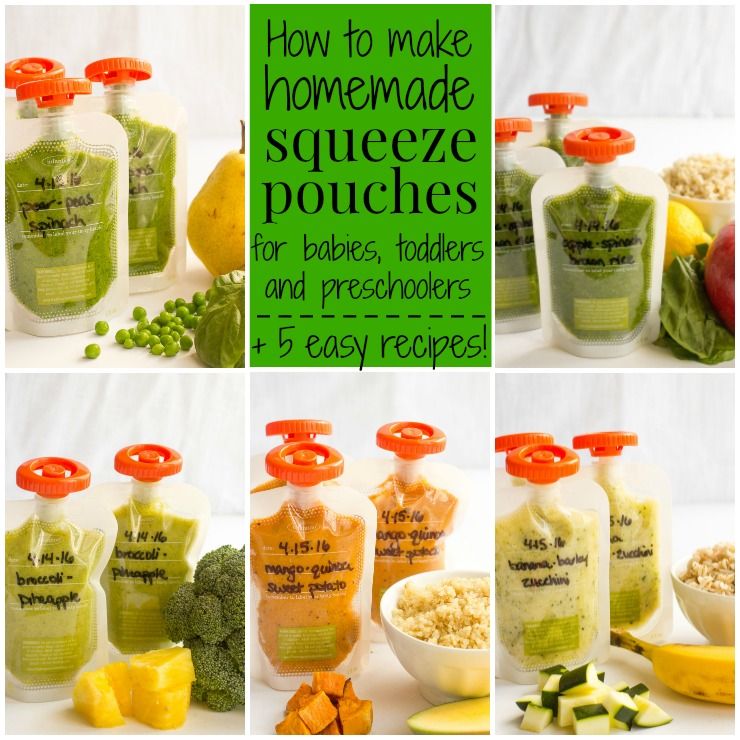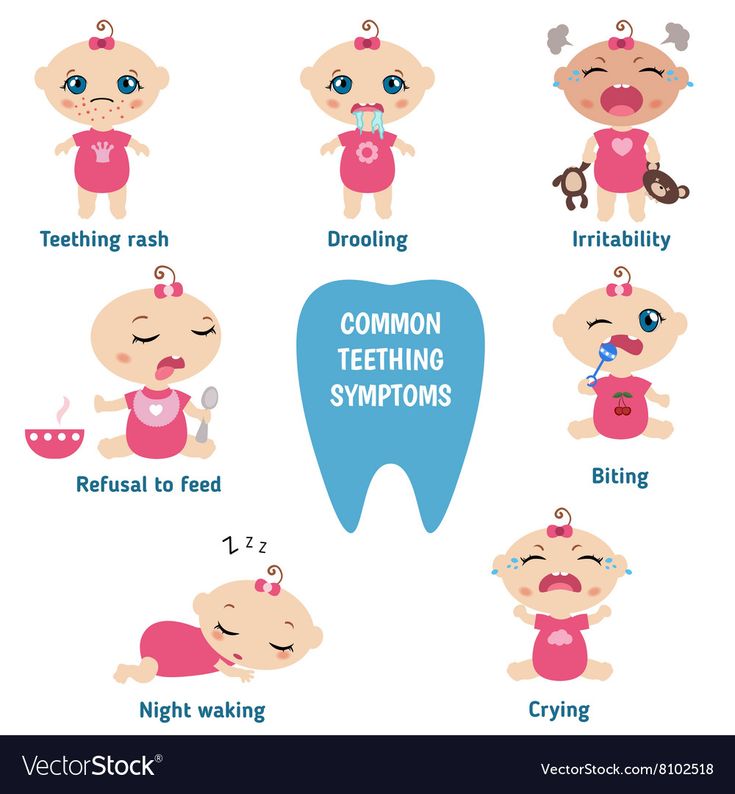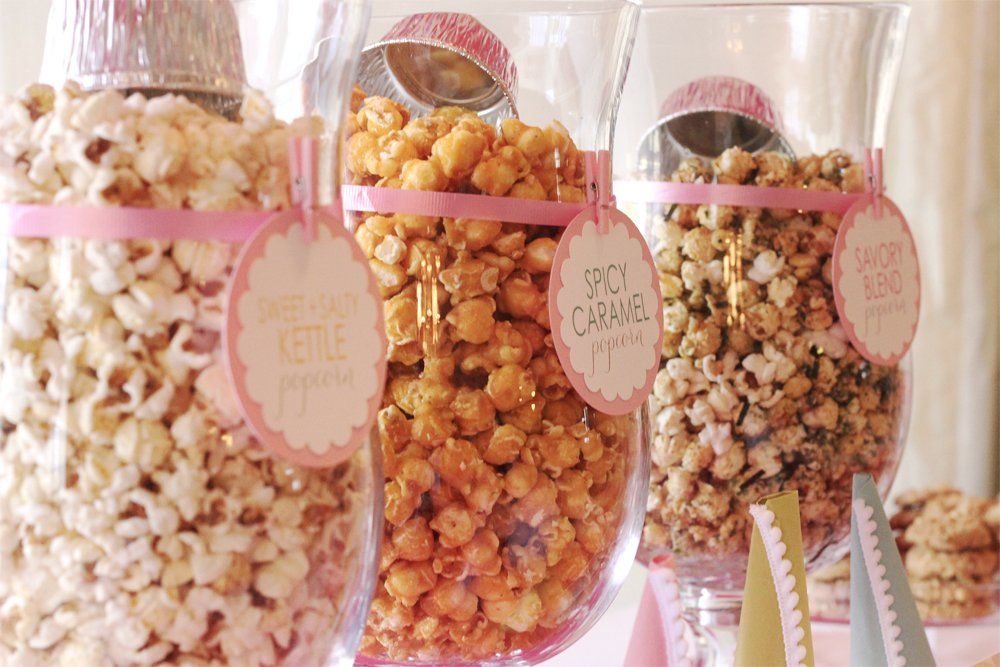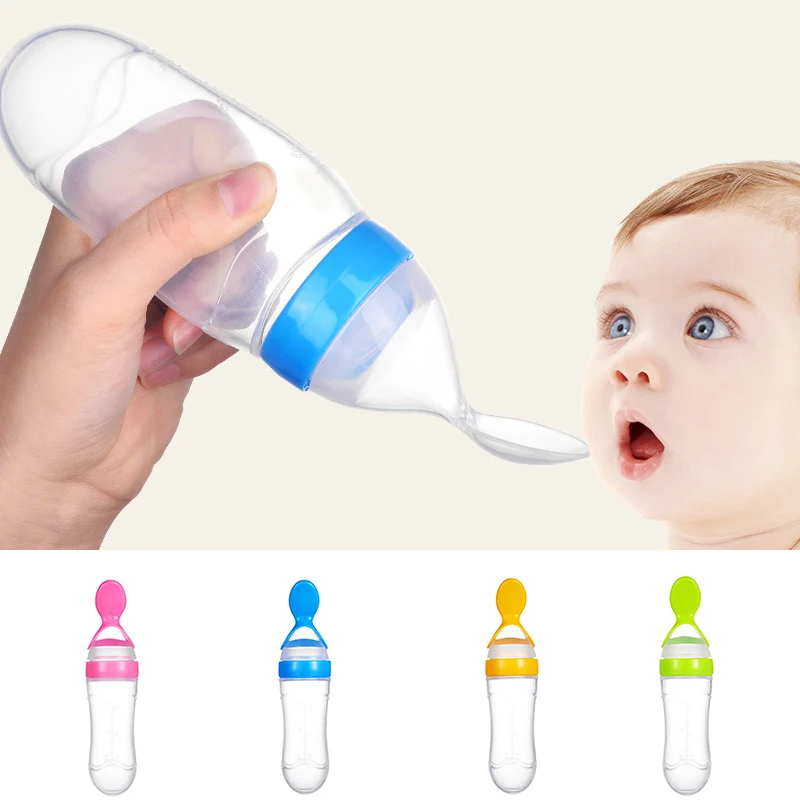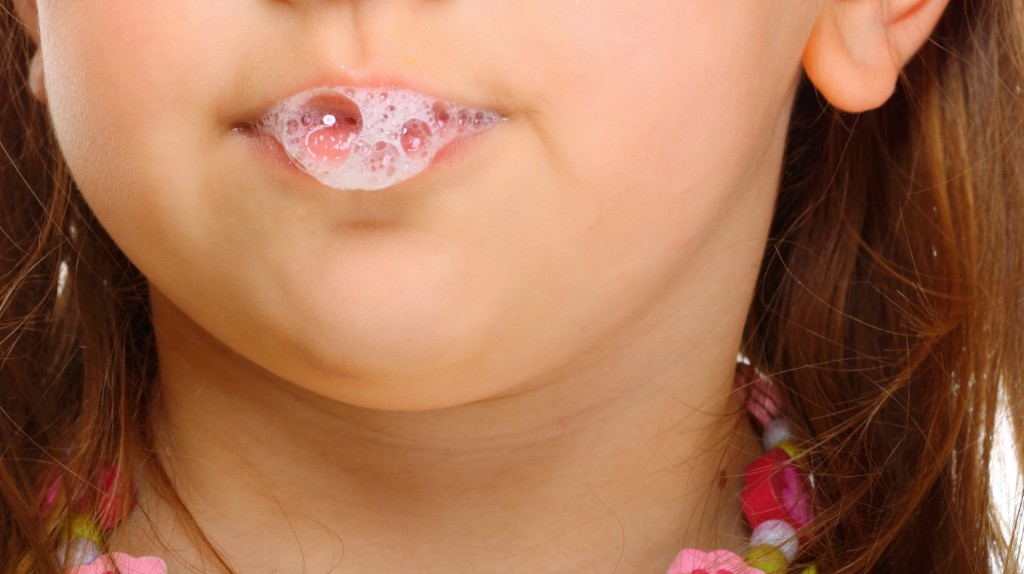Can i skip stage 1 baby food
Our Guide To Baby Food Stages
What do the different baby food stages mean? How to tell which stage is best for your baby? Here’s what you need to know about each stage of baby food.
Walking through the baby food aisle can often be confusing. So can reading recipes for different “stages” of homemade baby food blends.
What does it mean when a baby food is labeled “Stage 1,” “Stage 2,” or “Stage 3?” And how can you tell whether a given “stage” is best for your baby at this point in their solid food journey?
Here’s what you need to know about the different stages of baby food, and how to select the right one for your baby.
Note: “Baby food” refers to store-bought and homemade purees, as well as multi-ingredient blends. Finger foods don’t fall into a “stage” of baby food.
Stages Of Baby Food: The Basics
The stages of baby food match up with different developmental milestones in your baby’s solid food journey --- from the simplest purees, to thicker mixtures, to chunky blends that almost mirror some of your own table foods.
“Stages” aren’t completely standardized, and the American Academy of Pediatrics doesn’t include information on baby food stages in its official guidance for introducing solids. But baby foods in the same stage usually share similar characteristics.
- Stage 1: Thinnest, almost watery purees with one ingredient
- Stage 2: Thicker, multi-ingredient mixtures
- Stage 3: Chunky, lumpy mixtures
Baby should move through the different baby food stages (and/or should be introduced to finger foods) so they gain experience with different textures and flavors. Choose or prepare baby food in the thickest texture that baby is ready for. Move to the next stage when the baby has mastered that texture.
Learn more about the baby food textures in this video from BuonaPappa:
| --- | Texture | Ingredients | When is baby ready? | Ages to feed (approximate) |
|---|---|---|---|---|
| Stage 1 | Smooth, watery, thinly pureed | One ingredient at a time | When they’re ready for solids | 4-6 months old |
| Stage 2 | Thick, mashed or strained | Multiple soft ingredients blended together | Right after they’ve mastered thin purees | 6-8 months old |
| Stage 3 | Chunky, lumpy | Multiple soft ingredients in bigger pieces | After they’ve mastered the chewing needed for thick purees | 8-11 months old |
Stage 1 Baby Food: Thin, Simple, Watery Purees
Stage 1 baby foods are the simplest purees, meant for babies who are just starting solids (approximately 4-6 months old).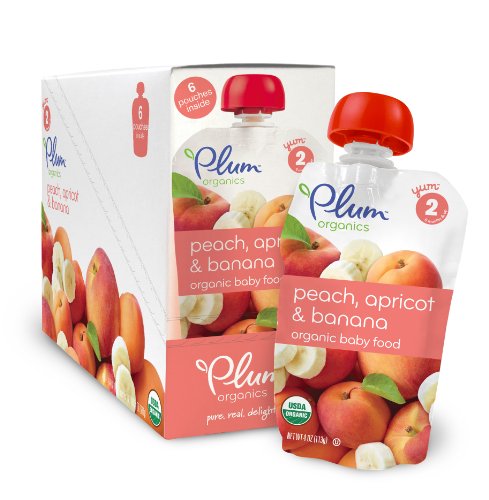 They are the thinnest baby foods, with no chunks or lumps. These baby foods are watery enough that they’ll easily drip off of a spoon.
They are the thinnest baby foods, with no chunks or lumps. These baby foods are watery enough that they’ll easily drip off of a spoon.
Stage 1 purees are almost always made with one ingredient --- most commonly, one fruit or one vegetable. Sometimes thin purees with only one pureed meat also fall into stage 1.
Start with small spoonfuls, and don’t be alarmed if the food comes right out of your baby’s mouth when you first start (they need to get used to swallowing).
If you think it’s helpful to get baby accustomed to the food, you can thin out the puree even more with some breastmilk or formula, then stop adding the breastmilk or formula once baby is used to swallowing the diluted version.
Examples of stage 1 baby foods:
- Mango puree
- Blueberry puree
- Avocado puree
- Pear puree
- Carrot puree
- Smooth chicken puree
Stage 2 Baby Food: Thicker, Multi-Ingredient Blends
Stage 2 baby foods are thicker mixtures that contain blends of multiple ingredients --- fruits, vegetables, proteins, and/or grains.
Even though they are sometimes called “thicker purees,” they may be strained or mashed instead of pureed. They’re usually meant for babies between 6 and 8 months of age --- of course, every baby is different.
Although stage 2 purees are thicker than stage 1 purees, and although they may include extremely small pieces of softer foods, stage 2 purees are still fairly smooth.
Stage 2 purees are meant to start getting babies used to different textures and flavor combinations.
So, once baby has mastered the thinner purees of stage 1, it’s recommended to move them to stage 2 as soon as possible. This will broaden their palates and introduce them to more textures, giving them a head start on a lifetime of adventurous eating.
Introducing a variety of healthy flavors and textures encourages baby to choose and enjoy these foods later in life, and helps fight off future picky eating periods. This also builds their confidence in chewing and munching more foods.
Don’t be alarmed if baby gags once they start stage 2 baby foods.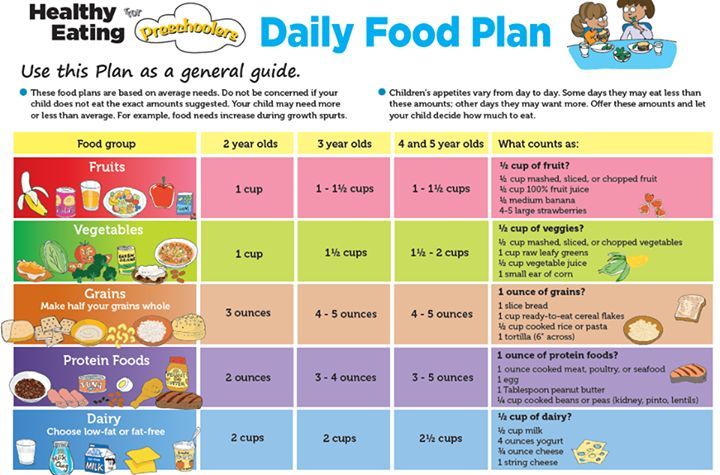 That’s just a natural way that baby’s body protects them from choking, as they start to explore the new textures for the first time. Just remember to start slowly when baby first moves to stage 2, to help them adapt.
That’s just a natural way that baby’s body protects them from choking, as they start to explore the new textures for the first time. Just remember to start slowly when baby first moves to stage 2, to help them adapt.
Examples of stage 2 baby foods:
- Zucchini, apple, spinach and chicken blend
- Sweet potato with pear and pepper
- Apple, green beans and broccoli blend
- Blueberry, mango and avocado mix
- This list from Baby Foode has even more stage 2 baby food ideas.
Stage 3 Baby Food: Chunky, Lumpy Blends
Stage 3 baby foods are chunky and lumpy. They contain larger pieces of soft foods that train baby to develop munching and chewing skills (since munching and chewing are learned, not innate, behaviors). They’re meant for babies who have mastered the stage 2 textures and who are ready to explore a wider texture variety.
Stage 3 purees are designed for babies between 8 and 11 months of age. Again, though, every baby is different, so some babies will be ready sooner than others.
If you haven’t already, this stage is an ideal time to introduce baby to soft, baby-safe finger foods, to build up baby’s palate and chewing confidence even more. (Or, you might choose to wait a bit, until baby has started to master the stage 3 blends, before starting finger foods.)
Examples of stage 3 baby foods:
- Check out this article for our seven favorite stage 3 baby food ideas!
Approaches To Feeding Baby: How Baby Food Stages May Fit In
Surprisingly, you don’t have to follow the three-stage approach exactly in order when introducing solids. Rather, there are three main approaches to feeding baby, and the baby food stages fit in in different ways.
Baby-led weaning: If you choose this approach, you skip all the “stages” of baby food. Instead, you introduce finger foods right away when baby is ready for solids.
Stages in order, then finger foods: In this approach, you closely follow the three “stages” of baby food, introducing a new “stage” as soon as baby has mastered the last one.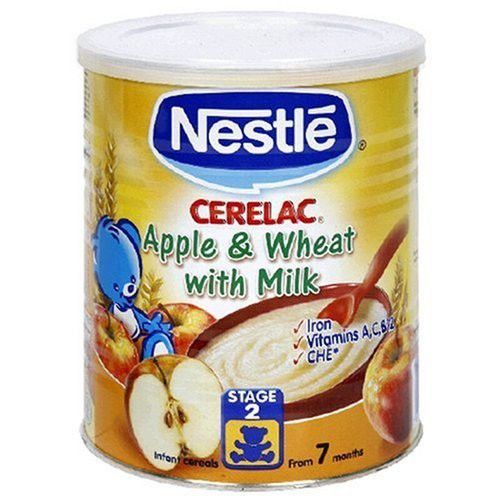 Then, you only introduce finger foods after baby masters the chunky purees of stage 3.
Then, you only introduce finger foods after baby masters the chunky purees of stage 3.
Purees + finger foods sooner: This approach introduces baby food “stages” and finger foods at the same time. First, introduce a few stage 1 purees. Then, after baby has eaten their first few smooth purees, start introducing finger foods. Feed them both the finger foods and stage 2 meals. Then, move to stage 3 meals alongside finger foods.
All three of these approaches are completely healthy ways to feed baby.
However, there are several things to keep in mind, especially if you decide to take baby through the baby food stages before starting finger foods.
Things To Keep In Mind When Feeding Baby: Making The Best Choices
- Introduce a wide variety of healthy flavors (we can’t emphasize this enough!) to encourage baby to become a lifelong healthy and adventurous eater.
- Progressing through the different baby food stages as soon as baby is ready, and introducing finger foods, makes introducing diverse flavors easier.

- Introduce baby to a variety of textures as well (smooth, mashed, thick and lumpy), so they’re ready to confidently explore different foods.
- Remember that babies are not born knowing how to swallow, munch and chew. These are learned skills that take practice. Introducing a variety of textures helps baby build confidence in these skills.
- As soon as baby masters one category of texture, challenge them with thicker textures.
- Even though texture variety is vital, if you’re making your own baby food, you’ll need to stick to softer food ingredients to minimize choking risk.
- Follow the U.S. Department of Agriculture (USDA) dietary guidelines for feeding children under the age of two:
- Introduce a wide variety of foods from all healthy food groups.
- Prioritize fruits and vegetables, in a variety of colors.
- Introduce proteins like meat, fish, seafood, eggs, soy products, nut products, and seed products.
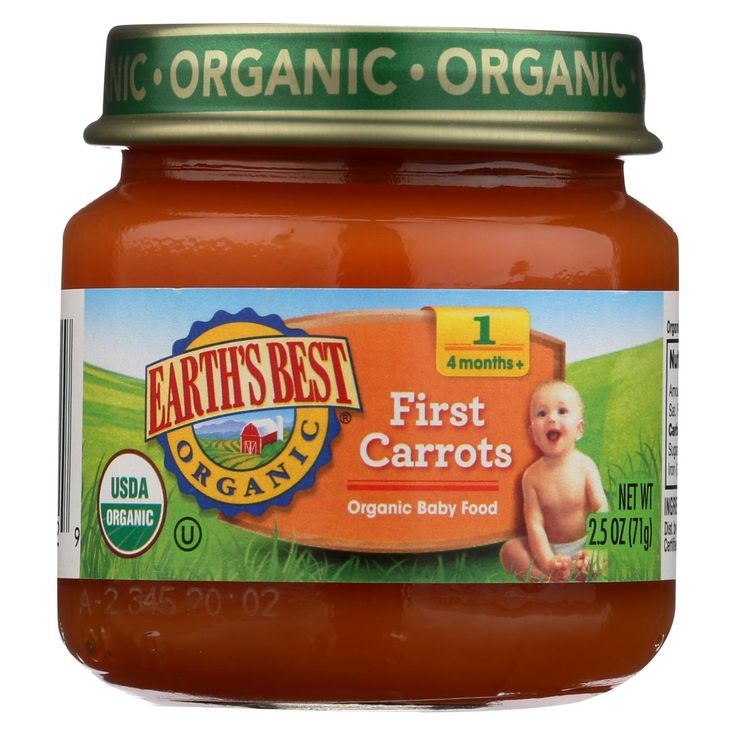
- As far as grains, focus on whole grains.
- Pick foods high in iron and zinc.
- Introduce age-appropriate forms of common allergy-causing foods, like "peanut, egg, cow milk products, tree nuts, wheat, crustacean shellfish, fish, and soy."
- Avoid baby foods with added sugar. Children under two years of age don’t need added sugar, says the USDA.
- Feeding added sugar puts babies at risk for preferring overly sweet foods later in life, so it may encourage unhealthy eating habits.
- Avoid baby foods that are high in sodium. Also, avoid any rice-based ingredients in baby foods, because rice is high in arsenic.
- Aim to introduce finger foods at or before 9 months of age, regardless of which baby food stage your baby is currently on. This will help them get used to gagging and finger foods, so they won’t be anxious about their natural gag reflex.
- Gagging is a perfectly normal way that babies’ bodies protect them from choking.
 But near their first birthday, babies start acquiring fears. Babies could start to fear gagging and finger foods if these foods aren't introduced early enough.
But near their first birthday, babies start acquiring fears. Babies could start to fear gagging and finger foods if these foods aren't introduced early enough.
Introducing Allergy-Causing Foods While Feeding Baby Food
USDA guidelines recommend introducing common allergy-causing foods during baby’s first year of life, in age-appropriate ways. But it can be difficult to introduce these foods when your baby is only eating purees.
For an easy, safe way to introduce these foods, Ready, Set, Food! fully mixes with baby’s puree, to give your baby the best chance at food freedom later in life.
--------------------------------
All health-related content on this website is for informational purposes only and does not create a doctor-patient relationship. Always seek the advice of your own pediatrician in connection with any questions regarding your baby’s health.
These statements have not been evaluated by the Food and Drug Administration. Products are not intended to diagnose, treat, cure or prevent any disease.
Products are not intended to diagnose, treat, cure or prevent any disease.
See the FDA Peanut Allergy Qualified Health Claim at the bottom of our homepage.
What You Need to Know About the Stages of Baby Food – Loco Bebe
A new baby is exciting and brings so much happiness to their parents and loved ones. Those adorable bundles of joy, do bring a lot of questions however. When will they sleep? How often do you change them? When will they crawl? Questions about feeding are often at the top of a parent’s list too. When do you give baby food? How do you know when they are ready? Don’t worry, keep reading for our guide on the stages of baby food.
Newborn and Infant Stage
For those expecting a baby, it is important to know that babies typically only drink milk or formula the first few months of their life. For those looking to nurse, there are a lot of benefits of breastfeeding. Formula is also a great way to ensure your baby gets the nutrients they need. Some Moms will choose to do a combination of both called supplementing. This is when a new Mom breastfeeds but then “tops up” with formula. A newborn will usually eat every 2 to 3 hours until 3 months old. Then will slowly stretch to 5 to 6 hours between feedings.
Formula is also a great way to ensure your baby gets the nutrients they need. Some Moms will choose to do a combination of both called supplementing. This is when a new Mom breastfeeds but then “tops up” with formula. A newborn will usually eat every 2 to 3 hours until 3 months old. Then will slowly stretch to 5 to 6 hours between feedings.
Stage 1
So when your baby is older, they are ready to try some new foods! “Baby Food” is considered purees and they are usually introduced around 6 months of age. This also depends on your baby’s development. It is important they can easily hold their head up and in addition, start to show interest in eating foods. Purees can be made at home or bought from a store in a pouch or jar.
It is important to note that Baby Led Weaning is different approach to introducing baby to solids. This is when you skip purees completely and go right to giving your little one finger foods. It is important to give softer foods for them to try first such as bananas and avocado.
But if going the puree route, know Stage 1 Baby Foods are very smoothly pureed. They can easily drip off a spoon. This makes them super easy for your baby to swallow. Start with one ingredient to try and see how baby reacts. Then introduce other veggies, fruits and meat purees. Some recommend trying one food at a time a few times in a row to check for allergies. Check out our Mucho Mango Organic Stage 1 Baby Food Pouches. It is easy to pack, no sugar added, vegan and delicious!
It may get messy, but starting solids is a big milestone for your little one (and an exciting moment as a parent)!
Stage 2
Once your baby has experience with Stage 1 purees, it is time to move to Stage 2. Stage 2 Baby Food is more roughly pureed, blended or strained. The consistency is thicker and may include chunks for your baby to gum around in their mouth. Your baby will likely be between 6 and 8 months of age when they try Stage 2 Baby Food and typically with foods with a little more texture. These purees often consist of a combination of foods mixed together too. When your baby is at Stage 2, try our Totally Tropical Organic Stage 2 Baby Food Pouches. Made from 100% locally sourced produce, this pouch is made of organic pineapple, passion fruit and sweet banana. All farm fresh and your baby will love it!
These purees often consist of a combination of foods mixed together too. When your baby is at Stage 2, try our Totally Tropical Organic Stage 2 Baby Food Pouches. Made from 100% locally sourced produce, this pouch is made of organic pineapple, passion fruit and sweet banana. All farm fresh and your baby will love it!
Stage 3
Once your baby is between 9 to 12 months, it’s time for Stage 3 Baby Food! These foods will often be finger foods so baby can feed themselves and will include thicker texture and chunks. As soon as your baby seems ready for self-feeding, give them a chance to try it!
No matter what stage your baby is in when it comes to food, remember every baby is different and will go at their own pace. Choosing healthy and natural baby food is important as your baby enters each stage. Loco Bebé takes pride in offering parents certified organic purees. These resealable pouches are perfect for at home or on the go and allow you to enjoy each new food stage easier.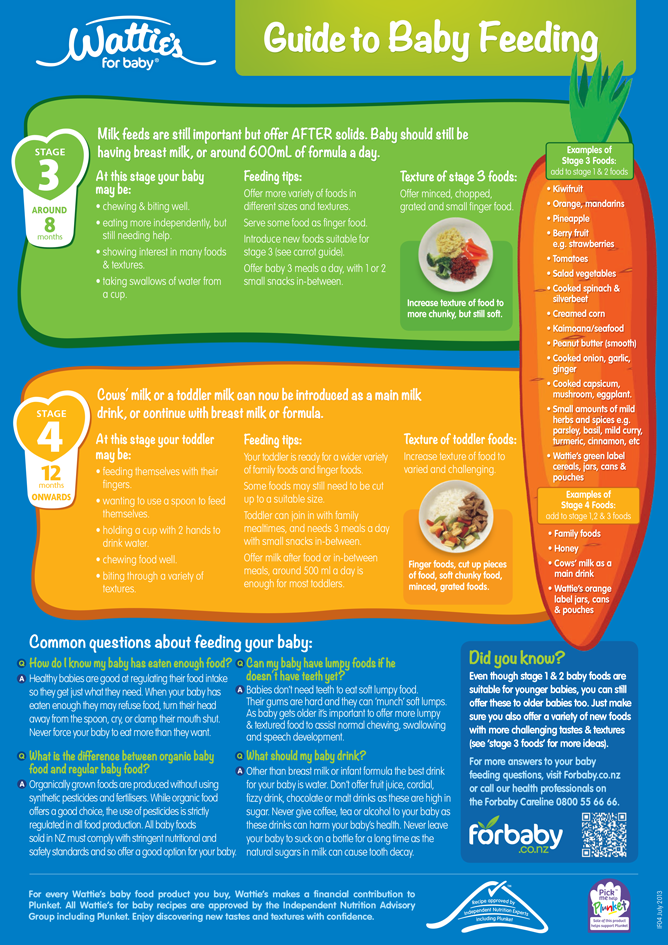 Enjoy this new time in your baby’s life!
Enjoy this new time in your baby’s life!
Complementary feeding rules + BONUS (approximate diet for a child up to a year from a nutritionist)
117296
From six months, or maybe earlier, your baby is already ready to try adult food. Where to start, what absolutely should not be done, and how to convince the "unwilling" to try a new product? Nutritionist Maria Litvinova answers mothers' questions, and mothers share their secrets.
From personal experience
In matters of nutrition, I act rather intuitively0010 ). Our little one, now 9 months old, has been interested in adult food since about 5 months old. By this time, his first teeth had already appeared, so from 5.5 months the pediatrician allowed him to start complementary foods.
Since we are very large and breastfeeding, the first began to introduce vegetable puree, and then fruit puree, a quarter of a teaspoon. Portions increased gradually, a new product came about once every 5-6 days. There was no particular enthusiasm, and carrots, broccoli, pears caused a clear disgust. Leaders - apple, plum. In the same period, they began to give a little seasonal fruit in a nibbler and a banana scraped with a spoon. Vegetables were better in the form of a thin soup with a slight addition of sunflower oil. Closer to 6.5–7 months, we got acquainted with meat: turkey, rabbit, then other types. Meat, both jarred and fresh, chopped in a blender, I liked even less. After 7 months, dairy-free cereals began. I liked rice, oatmeal, corn, less - buckwheat. After some time, they began to add a little butter to it, and after 8 months they switched to milk porridge. Monocomponent ones go well, but the test of the multicomponent one with berries was not successful: the cheeks and ears turned red. In the same period, fruit purees with cottage cheese, and then with cream, began to be eaten with pleasure. Sometimes the baby agrees to chew baby biscuits slightly soaked in water. We don’t like chicken yolk and are easily recognized in other foods, so we don’t eat it regularly.
There was no particular enthusiasm, and carrots, broccoli, pears caused a clear disgust. Leaders - apple, plum. In the same period, they began to give a little seasonal fruit in a nibbler and a banana scraped with a spoon. Vegetables were better in the form of a thin soup with a slight addition of sunflower oil. Closer to 6.5–7 months, we got acquainted with meat: turkey, rabbit, then other types. Meat, both jarred and fresh, chopped in a blender, I liked even less. After 7 months, dairy-free cereals began. I liked rice, oatmeal, corn, less - buckwheat. After some time, they began to add a little butter to it, and after 8 months they switched to milk porridge. Monocomponent ones go well, but the test of the multicomponent one with berries was not successful: the cheeks and ears turned red. In the same period, fruit purees with cottage cheese, and then with cream, began to be eaten with pleasure. Sometimes the baby agrees to chew baby biscuits slightly soaked in water. We don’t like chicken yolk and are easily recognized in other foods, so we don’t eat it regularly.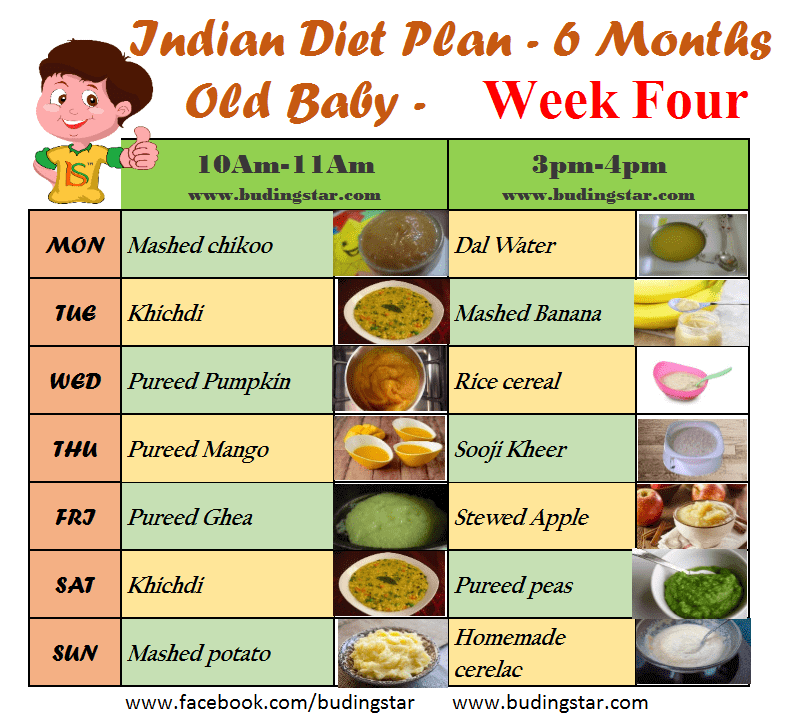 During the day, the baby drinks a little water, occasionally - highly diluted juice. After 9months, we began to gradually introduce children's yogurt, we plan to try children's kefir. In cases where the child is stubborn, co-feeding with one of their favorite toys helps, but sometimes. Otherwise, the meal is transferred, or the portion is divided into two parts.
During the day, the baby drinks a little water, occasionally - highly diluted juice. After 9months, we began to gradually introduce children's yogurt, we plan to try children's kefir. In cases where the child is stubborn, co-feeding with one of their favorite toys helps, but sometimes. Otherwise, the meal is transferred, or the portion is divided into two parts.
For information . WHO suggests the following rates of increase in complementary foods: if started at 6 months, other foods along with liquids should make up approximately 25% (150 - 250 g) of the total diet by 1 year - in the event that the baby is breastfed , and he requires a breast regardless of meals . In artificial children, ordinary food quickly replaces formula feedings, one by one, all meals are successively replaced. A child's introduction to complementary foods can take up to a year.
Tatyana G., mother of many children:
– No complementary foods until six months, only filtered water, if it's hot.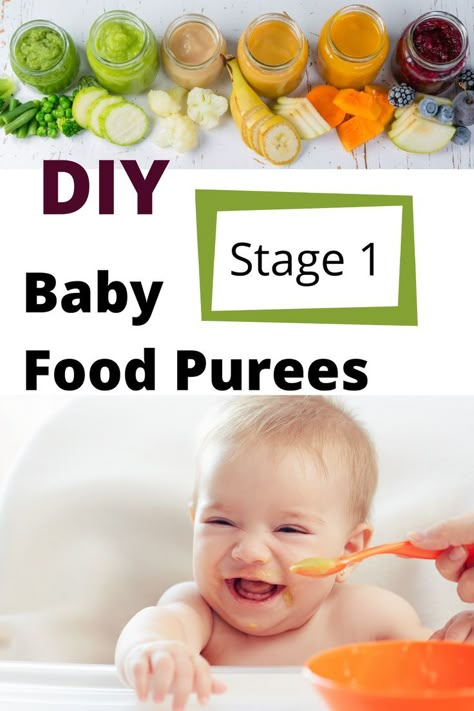 The introduction of complementary foods began with vegetables, then cereals, meat. I introduced fruits when teeth appeared . I introduced sour milk to my daughter immediately after cereals, the boys are allergic to preservatives, so is only after a year and a half. The peasants did not want complementary foods until almost 9 months. I don't give any sweets, juices, chocolate, even cookies to the younger ones. They don’t even ask, t and to as they don’t know. In the handle a crust of bread, cucumber, dried fruit.
The introduction of complementary foods began with vegetables, then cereals, meat. I introduced fruits when teeth appeared . I introduced sour milk to my daughter immediately after cereals, the boys are allergic to preservatives, so is only after a year and a half. The peasants did not want complementary foods until almost 9 months. I don't give any sweets, juices, chocolate, even cookies to the younger ones. They don’t even ask, t and to as they don’t know. In the handle a crust of bread, cucumber, dried fruit.
Tatyana D., mother of many children:
- I am against canned puree, I cooked it myself. But she didn't really force it. At least while breastfeeding. Later she gave a cucumber, a crust of bread in her hand - they got used to chewing it. Drank juices, fresh juices, fresh compotes.
Basic rules for the introduction of complementary foods
According to nutritionist Maria Litvinova , the introduction of complementary foods is a crucial stage in a child's life. Its main goal is to provide the growing body with the nutrients necessary for development. A child who is breastfed does not need to introduce additional food products up to 6 months of life.
Its main goal is to provide the growing body with the nutrients necessary for development. A child who is breastfed does not need to introduce additional food products up to 6 months of life.
Rule 1 Complementary feeding age
Usually 6 months is the average time to start complementary foods. With insufficient weight gain, it can be recommended earlier: at 4.5 months - for a child on artificial feeding, at 5 months - for breastfeeding. Ideally, if the baby has at least 1 tooth at the beginning of the introduction of complementary foods, the child explores the contents of mom and dad's plates with interest, the baby is healthy and has not received preventive vaccinations in the last 3 days. However, the fundamental principle of rational nutrition of infants is maximum individualization and taking into account the characteristics of the state of health.
Rule 2. Type of complementary foods
In case of underweight, frequent stools the optimal first complementary food is porridge . With overweight, constipation, signs of rickets - vegetable puree. Then enter meat , later porridge.
With overweight, constipation, signs of rickets - vegetable puree. Then enter meat , later porridge.
Complementary feeding algorithm:
- complementary foods are given at the beginning of feeding, gradually replacing breast milk or an adapted formula ;
- when switching to a fundamentally new type of complementary foods (vegetable, cereal or sour milk), you should start with half a teaspoon, in 2 weeks bringing the serving volume to the recommended norm ,
- z and one new product is introduced once ;
- Complementary foods must be free of pieces in texture and should not cause difficulty in swallowing ;
- each new product is introduced within 5 days with obligatory monitoring of the reaction, including the appearance of a rash, change in the nature of the stool ;
- new products introducing yat into the child's diet in the first half of the day, so that the reaction can be traced until the evening.

First food "Vegetables + Meat" (6 months)
The first vegetable product, as a rule, is zucchini, you can add mashed cauliflower or broccoli. Then, multicomponent purees are introduced at the expense of pumpkin, cabbage, and subsequently - tomatoes and beets. From 7 months green peas are added.
5 grams of vegetable oil can be added when the volume of the main serving of vegetable puree is half of what it should be. Meat in the form of minced meat or mashed potatoes is added to vegetables in an amount of up to 50 grams per day ( this combination allows the absorption of iron ). The age of introduction is 7 months.
Up to 9-10 months it is better to use special canned meat for children.
The second complementary foods - porridge (7-8 months)
The first porridge is better to introduce buckwheat - one of the most useful in terms of vitamin and mineral composition. Then rice, oatmeal, millet, wheat, corn porridge.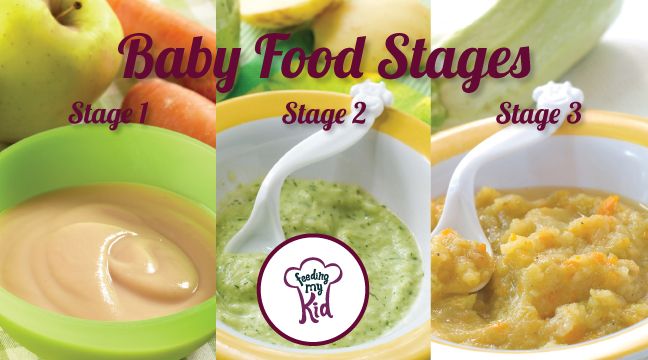 Semolina porridge is not introduced until a year old, but it is better to wait up to three years (semolina porridge has a high glycemic index, and it also prevents the absorption of calcium).
Semolina porridge is not introduced until a year old, but it is better to wait up to three years (semolina porridge has a high glycemic index, and it also prevents the absorption of calcium).
Later, porridge can be prepared with milk formula (50 ml water + 50 ml formula). Cow's milk should not be used before the age of one. Butter in the amount of 5 grams is added to porridge when the volume of porridge injected is at least 70 ml.
By 9-10 months, multi-cereal porridges are introduced, as well as baby pasta.
Third food - fruit purees (7-8 months)
Fruit should be introduced after vegetables. It is better to use seasonal berries and fruits. In summer - apple, pears, currants, gooseberries and even strawberries. In winter - industrial mashed potatoes. Fruits can be consumed separately, or with cereals, preferably dairy-free.
Fruit juices are undesirable for children, especially industrial ones, as they contain a lot of sugar. It is better to teach a child to drink water, you can give dried fruit compotes, fresh juices diluted by half with water. Herbal teas should not be given without a doctor's recommendation.
Herbal teas should not be given without a doctor's recommendation.
Cottage cheese is recommended from 6 months, but it is better to introduce it later, because. the baby is getting enough breast milk or formula. Up to a year, use only special children's curds. This will reduce the risk of stress on the kidneys. After a year, cottage cheese can be given plain, raw or in the form of casseroles. Dairy products are tried at 8 months. They should not exceed 200 ml per day.
Fish and offal introduced from 8 months. From 8–9 months, fish is offered once or twice a week instead of meat. The yolk begins to be introduced from 7 months (bring to the norm 1/4 - ½ of the yolk). Crackers, cookies - from 7 months.
From 8 months you can use onions and garlic, from 9 months you can use spices (white pepper, bay leaf) and spicy vegetables (celery, dill).
Approximate diet for a child under one year old:
| Age | 6.00 | 10.00 | 14. | 18.00 | 22.00 |
| 6 months | Breast milk or formula - 200 ml. | Breast milk or formula - 200 ml. | Vegetable puree 150 g Vegetable oil 1 tsp. Breast milk or formula - 50 ml. (meat puree - 30 g with the introduction of meat). | Breast milk or formula - 200 ml. | Breast milk or formula - 200 ml. |
| 7 months | Breast milk or formula - 200 ml. | Porridge - 150-170 g Fruit puree - 30 g Yolk - 1/4 | Vegetable puree 160 g Vegetable oil 1 tsp Meat puree - 50 g Bread - 5 g | Breast milk or formula - 130 ml Fruit puree - 40 g biscuits - 5 g. | Breast milk or formula - 200 ml. |
| 8 months | Breast milk or formula - 200 ml. | Porridge – 170 g Fruit puree – 30 g Yolk – 1/2 | Vegetable puree 180 g Vegetable oil 1 tsp Meat (fish) puree – 50 g Bread – 5 g | Breast milk or formula - 110 ml Fruit puree - 40 g Cottage cheese - 40 g. Cookies - 10 g. Cookies - 10 g. | Breast milk or kefir - 200 ml. |
| 9-10 months | Breast milk or formula - 200 ml. | Porridge - 180 g Fruit puree - 50 g Yolk - 1/2 | Vegetable puree 180 g Vegetable oil 1 tsp Meat (fish) puree - 50 g Bread - 5 g | Breast milk or kefir - 100 ml Fruit puree – 50 g Cottage cheese – 40 g Cookies – 10 g | Breast milk or kefir - 200 ml. |
| 11-12 months | Breast milk or formula - 200 Porridge - 200 ml. | Porridge - 180 g Fruit puree - 50 g Yolk - 1/2 | Breast milk or kefir - 150 ml. Meat (fish) puree - 70 g Vegetable puree 180 g. Vegetable oil 1 tsp. Bread - 5 g | Fruit puree - 60 g Breast milk or kefir - 200 ml. Cottage cheese - 40-60 g biscuits - 10-15 g | Breast milk or kefir - 200 ml. |
* The table shows an example menu. Porridge can be cooked on a mixture or breast milk - the volumes are indicated with this in mind. Kefir or mixture is written everywhere. Depends on the preferences of the child, can be mutually replaced. Kefir is enough once a day.
Kefir or mixture is written everywhere. Depends on the preferences of the child, can be mutually replaced. Kefir is enough once a day.
Feed the baby, mission impossible?
Elena F., a young mother:
– It was impossible to feed the elder. They invented everything they could: they fed their favorite toys with him, and read books at the table, and watched TV, and all kitchen utensils were used in turn. And my grandmother was both a clown and a man-orchestra.
Many mothers have problems feeding their little “unwanted babies”. Accumulating numerous Internet tips and recommendations of familiar mothers, I would venture to offer a few recommendations:
It is better to feed from bright dishes.- The child should eat only at the table, sitting in his chair, and not in a random place, and preferably at least once a day with the whole family. And start complementary foods, only noticing its complete readiness: it is the desire to try food, and not play with dishes and napkins.
 Everything is very individual, and the child does not owe anything to anyone,
Everything is very individual, and the child does not owe anything to anyone, - It’s good to have a separate bright dish that will be associated exclusively with food, and instill independent nutrition skills as early as possible. in special devices, like a nibbler, or scrape with a spoon. Then you should give them as often as possible. The child must have free access to them during the day,
- Snacks should not be allowed between meals, sweets and pastries should not be given,
- Sweets, soda, fast food, the baby should be introduced as late as possible, 2-3, as is customary, and make a verdict - they say, "he categorically does not eat this with us";
- Disliked foods should be masked with preferred ones. Meat and yolk are better combined with vegetables than porridge,
- Never turn food into a game, feed after cartoons, advertising,
- Food should not be a source of reward or punishment;
- It is worth being patient, not pushing the child.
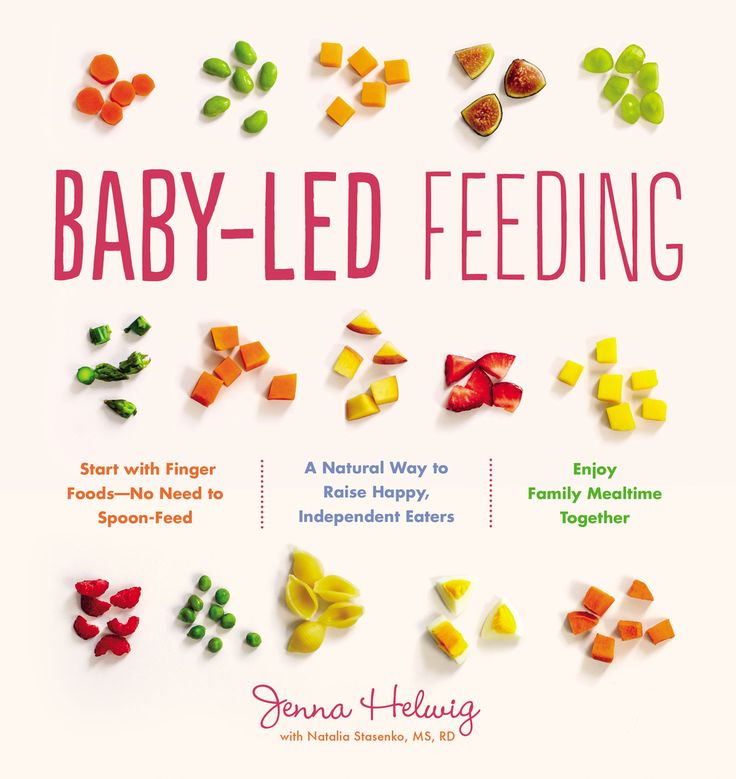 He may finish eating later or even skip feedings entirely. The daily norm of the product can be divided into two doses;
He may finish eating later or even skip feedings entirely. The daily norm of the product can be divided into two doses; - The child has every right not to adhere to the norms of nutrition, and to eat according to his appetite: today a lot, and tomorrow a little bit. Do not force to eat;
- For older people who don't want to, you can make a dish unusual and beautiful. Hide a useful edible surprise in it. Take ideas from Jacob's Food Diaries blog here;
- You can try to cheat: put a plate of food in front of you so that the child seems to be eating your food. Although most sources advise teaching a child to eat only from his own plate;
- The whole family should demonstrate proper eating behavior: eat slowly, with appetite, the right foods. Emphasize the pleasure of the process;
- Sometimes you can use your imagination: for example, there was advice for children over one year old to put an album and a felt-tip pen next to the plate. If a child eats a pear, shade a piece of a drawn one with each piece, the same with soup;
- Food should always be at a comfortable temperature, portions should be small, and the menu varied;
- Avoid allergenic foods if there is a tendency in the family.
 For example, it is not advisable to give honey to children under one year old (including because it can become a source of botulism, and not just allergies). Fish should be given with caution, do not offer the baby seafood, caviar, mushrooms, peanuts, products with dyes and preservatives, herbal teas and infusions.
For example, it is not advisable to give honey to children under one year old (including because it can become a source of botulism, and not just allergies). Fish should be given with caution, do not offer the baby seafood, caviar, mushrooms, peanuts, products with dyes and preservatives, herbal teas and infusions.
Ekaterina NOVITSKAYA, host of the section "Mom on maternity leave"
Any questions about the development, upbringing, problems of your children, you can send me an email: [email protected] Let's discuss together!
Page not found - State Budgetary Preschool Educational Institution Child Development Center
- 0108
- 2. Information about the educational institution
- 3. Activities of the educational institution
- 4. Materials
- 5. Projects
- 5.1. Regional internship site
- 5.2. Base site of the Kalininsky district of St. Petersburg
- 5.3. Federal innovation platform 2019-2020
- 6.
 Competitions
Competitions - 7. For teachers
- 8. For parents
- 9. Information security
- 10. Mentoring
- Rules for admission to study in educational programs of preschool education
- Admission to kindergarten
- Anti-corruption
- Visually impaired version
- 2. Information about the educational institution
-
- 2.1. Basic information
- 2.2. Structure and governing bodies of an educational institution
- 2.3. Documents
-
- 2.3.1. Self-examination report
- 2.3.2. Document on the procedure for the provision of paid educational services
- 2.3.3. Orders, performance reports
- 2.4. Education
-
- 2.4.1. The first junior group "Chickens" (from 2 years old)
- 2.4.2.3. The first junior group of short stay (from 2 years old)
- 2.4.4. The second junior group "Asterisks" (from 3 years old)
- 2.
 4.5. The second junior group "Fireflies" (from 3 years old)
4.5. The second junior group "Fireflies" (from 3 years old) - 2.4.6. Middle group "Fidgets" (from 4 years old)
- 2.4.7. Middle group "Teremok" (from 4 years old)
- 2.4.8. Senior group "Smile" (from 5 years old)
- 2.4.9. Senior group "Crane" (from 5 years old)
- 2.4.10. Preparatory group for school "Why" (from 6 years old)
- 2.4.11. Preparatory school group "Gnomiki" (from 6 years old)
- 2.5. Educational standards
- 2.6. Management. The teaching staff.
-
- 2.6.a. Manual
- 2.6.b. Teaching staff
- 2.6.c. Intracompany advanced training of teaching staff of GBDOU
- 2.7. Logistics
- 2.8. Scholarships and other types of financial support
- 2.9. Paid services
-
- - Additional education programs
- - For children not attending kindergarten
- 2.10. Financial and economic activities
- 2.
 11. Vacancies for reception (translation)
11. Vacancies for reception (translation) - 2.12. Available environment
- 2.13. International cooperation
- 3. Activities of an educational institution
-
- 3.1. Certification of teaching staff
- 3.2. Advanced training
- 3.3. Organizational and methodological activities
-
- 3.3.a. Escort of teachers GBDOU
- 3.4. Conferences, seminars, meetings
- 3.5. Events
- 3.6. Dissemination (dissemination of experience in organizational and methodological work)
- 4. Materials
-
- 4.1. Laws, Decrees, Ordinances, Orders
-
- 4.1.1. Federal (Ministry of Education and Science of Russia, Rosobrnadzor)
- 4.1.2. Regional
- 4.1.3. GBDOU
- 4.2. Instructional-methodical letters
- 4.3. Information letters
- 4.4. Guidelines
- 4.5. Teaching materials
- 5.
 Projects
Projects - 5.1. Regional internship site
- 5.2. Base site of the Kalininsky district of St. Petersburg
-
- 5.2.1. Project
- 5.2.2. Work plan for 2021
- 5.2.3. Innovative Products BP
- 5.2.4. News line (press releases)
- 5.2.5. Publications
- 5.2.6. Materials BP
- 5.2.7. BP - parents
- 5.2.8. Electronic methodical constructor
- 5.3. Federal innovation platform 2019-2020
-
- 5.3.1. Regulatory support
- 5.3.2. Partner organizations in the implementation of the innovative educational project
- 5.3.3. Events, events
- 5.3.4. Materials FIP
- 5.3.5. Programs, regulations, concepts
- 5.3.6. Professional development of teachers FIP
- 5.3.7. Object-spatial development environment
-
- Registration
- Entry test
- Additional professional program
- Module #1
- 1 stage
- Stage 2
- Stage 3
- Stage 4
- Module #2
- 1 stage
- Stage 2
- Stage 3
- Stage 4
- Module #3
- 1 stage
- Stage 2
- Stage 3
- Stage 4
- Summing up
- 6.


